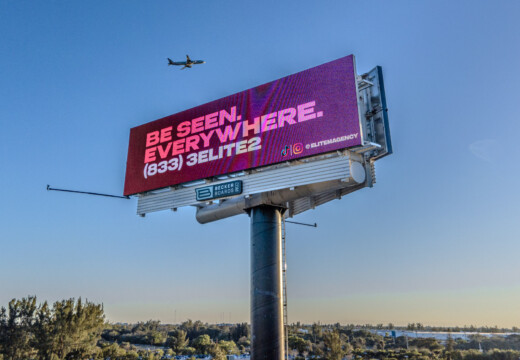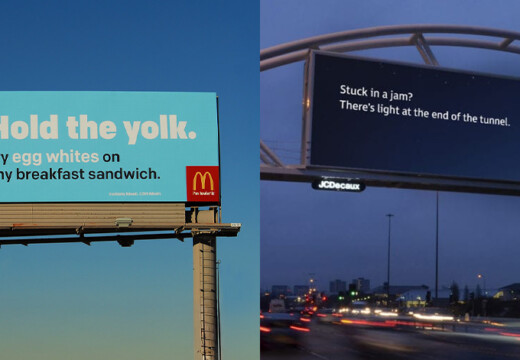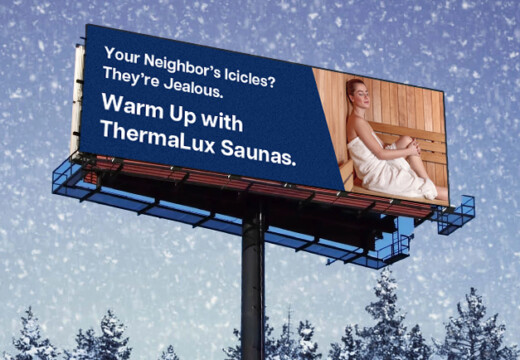Digital billboards can be 10x brighter at night than traditional ones, making compliance with lighting rules essential for safety and avoiding fines. Here’s what you need to know:
- Federal Rules: Brightness must not exceed 0.3 foot-candles above ambient light. Automatic brightness controls are mandatory.
- Local Rules: Many cities have stricter curfews, zoning laws, and brightness limits.
- Key Metrics: Measure brightness in nits (300 max at night) or foot-candles (0.3 above ambient).
- Tools Needed: Use calibrated light meters and maintain detailed records of readings and system checks.
- Auto-Adjustment Systems: Install light sensors and ensure regular calibration for real-time brightness control.
Quick Tip: Regularly test and document brightness levels to stay compliant and avoid shutdowns.
Digital Billboard Lighting Measurement
Billboard Lighting Rules
Digital billboard lighting in the United States is governed by a mix of federal guidelines and stricter local regulations.
Federal Lighting Standards
At the federal level, digital billboards must adhere to specific brightness limits, ensuring they don’t exceed 0.3 foot-candles above ambient lighting conditions. These rules aim to balance visibility with safety.
Here’s a quick breakdown of the key federal requirements:
| Requirement | Specification | Purpose |
|---|---|---|
| Maximum Brightness | 0.3 foot-candles above ambient | Minimize driver distraction |
| Automatic Adjustment | Light sensors required | Adapt to changing conditions |
| Motion Restrictions | No flashing, scrolling, or moving content | Ensure traffic safety |
The Federal Highway Administration (FHWA) also requires all digital billboards to have automatic brightness controls that adjust based on surrounding light levels. These measures create a baseline for safety and visibility. However, local jurisdictions often go beyond these federal rules.
Local Rules by Region
Local governments frequently impose tighter restrictions to address specific community concerns. For example, Los Angeles implemented stricter brightness limits in 2025 to combat nighttime light pollution.
Some states enforce the federal standard alongside additional local policies.
“Recent trends include stricter nighttime brightness limits, increased adoption of automatic brightness controls, and a growing emphasis on reducing light pollution in urban areas”, according to the DarkSky Technical Committee’s latest guidelines.
When navigating local rules, advertisers should focus on the following:
- Municipal codes: Local zoning laws often detail specific lighting requirements.
- Curfew rules: Many cities enforce dimming or complete shutdowns during designated hours.
- Distance measurements: Brightness measurement standards can vary depending on the jurisdiction.
Cities like Seattle and Portland have introduced specialized regulations for billboards near residential areas, further emphasizing the shift toward more comprehensive oversight.
Compliance is taken seriously, with authorities conducting regular inspections using calibrated light meters. Violations can lead to hefty fines or even mandatory billboard shutdowns.
Required Lighting Measurements
Before launching a campaign, it’s crucial to track key lighting measurements to ensure compliance with both federal and local regulations.
Light Output Limits
Two primary metrics are used to measure brightness:
| Measurement Type | Daytime Limit | Nighttime Limit | Measurement Method |
|---|---|---|---|
| Direct Brightness (nits) | 5,000–7,500 | 300 | Measured directly from the billboard surface |
| Illuminance (foot-candles) | 0.3 above ambient | – | Measured at a specified distance |
For example, Colorado enforces a limit of 0.3 foot-candles above ambient light, a standard also followed in states like Massachusetts, Michigan, New Mexico, Oregon, Puerto Rico, Tennessee, and Wyoming.
To ensure accurate readings, follow these techniques:
- Measure at predetermined distances from the display.
- Take readings with the display both on and off to determine the difference.
- Record ambient light conditions during testing.
- Document all measurements with time stamps for reference.
After establishing these limits, it’s important to consider systems that help maintain compliance automatically.
Auto-Adjustment Systems
In addition to manual measurements, auto-adjustment systems are a reliable way to ensure ongoing compliance with brightness regulations.
Digital billboards often use light-sensing technology to monitor ambient light levels and adjust brightness accordingly. These systems typically include:
- Light Sensors: Installed to detect real-time ambient lighting conditions.
- Control Software: Processes sensor data to adjust the display’s brightness.
- Calibration Tools: Keeps sensor readings accurate over time.
Here’s how auto-adjustment systems can make a difference:
| Benefit | Impact |
|---|---|
| Regulatory Compliance | Maintains brightness within legal limits |
| Energy Efficiency | Lowers power usage during dimmer lighting periods |
| Safety Enhancement | Prevents glare while ensuring clear visibility |
For best results, ensure the following:
- Sensors are installed in locations that reflect true ambient light levels.
- Calibration is performed regularly, following manufacturer recommendations.
- Maintenance and system checks are conducted routinely to avoid lapses in compliance.
Compliance Steps
Light Testing Methods
Accurate light measurement requires using the right tools and techniques. A calibrated illuminance meter (photometer) with a sensitivity range of 0.1–10 foot candles and NIST-traceable certification is essential.
| Testing Component | Requirement | Purpose |
|---|---|---|
| Primary Equipment | Calibrated photometer (±0.1 fc accuracy) | Measures foot candles |
| Distance Tool | Laser distance meter | Ensures correct measurement position |
| Backup Equipment | Secondary calibrated photometer | Provides continuity in testing |
Here’s how to take measurements effectively:
- Distance Calculation
Determine the proper measurement distance by calculating the square root of the sign area, then multiply by 100. Position yourself perpendicular to the billboard face at this distance. - Ambient Light Reading
Record the baseline illuminance with the billboard turned off or displaying a black screen. Be sure to note the weather conditions and time of the reading. - Billboard Light Reading
Turn the billboard to a full white screen and measure the illuminance from the same position. The difference between this reading and the ambient light reading should not exceed 0.3 foot candles.
After completing the tests, it’s critical to keep detailed records to verify compliance over time.
Required Documentation
Thorough documentation is key to demonstrating compliance. Each measurement and system adjustment must be recorded accurately to support verification efforts.
| Document Type | Details | Retention Period |
|---|---|---|
| Calibration Certificates | NIST-traceable certification for photometers | 12 months |
| Measurement Logs | Dates, times, conditions, and readings | 12 months |
| Technical Specs | Auto-dimming system documentation | Duration of use |
| Maintenance Records | Light sensor testing and system adjustments | 12 months |
| Compliance Affidavits | Signed by certified technicians | 12 months |
To keep your records organized and complete:
- Log all measurements, including ambient and billboard brightness readings, along with calculated differences.
- Take time-stamped photos during nighttime testing for visual evidence.
- Record any complaints about brightness and the actions taken to address them.
- Document routine maintenance of light sensors and dimming systems.
- Store records in both electronic formats (like PDFs) and physical copies for easy access.
Proper documentation not only ensures compliance but also helps address any potential disputes or inspections with confidence.
sbb-itb-2e2e93f
Light Management Solutions
Managing light effectively is key to keeping billboards compliant with regulations while ensuring they remain visible and minimize their impact on the environment. Today’s solutions blend automated technologies with physical tools to maintain proper brightness levels for digital billboards.
Light Sensors Setup
Installing and calibrating light sensors correctly is essential for automatic brightness adjustments.
Here are some best practices:
- Place sensors away from direct artificial light to avoid interference.
- Use multiple sensors to build redundancy and improve reliability.
- Calibrate sensors under varying weather conditions to ensure accuracy.
- Set gradual transition speeds to avoid abrupt brightness changes.
In addition to sensors, using night controls and physical shields can further enhance compliance and performance.
Night Controls and Shields
Night controls and physical shields help reduce light pollution while keeping billboards effective at night. States like Colorado and Tennessee have adopted nighttime brightness standards that require automatic controls to adjust light levels during specific hours. These controls typically dim displays during late-night periods when lower brightness is sufficient, protecting nearby homes and preserving the nighttime environment.
Physical shields, such as louvers or hoods, are another layer of protection. They focus light where it’s needed and prevent it from spilling into unintended areas.
Blip Compliance Tools

Blip has developed tools that align with federal, state, and local lighting regulations, ensuring compliance across various jurisdictions. These tools are embedded into Blip’s design guidelines, creating a reliable framework for advertisers.
Blip Design Standards
Advertisers can access Blip’s design guidelines at www.blipbillboards.com/billboard-design-guidelines/. These guidelines focus on critical lighting standards, including:
- Brightness Limits: Adheres to the 0.3 foot-candle threshold for brightness.
- Color Combinations: Promotes visibility while reducing glare.
- Background Rules: Sets specific parameters for white backgrounds and display brightness.
Federal regulations mandate that digital billboards adjust brightness automatically based on ambient light. This prevents excessive brightness, which could compromise road safety.
Blip Compliance Features
Blip goes beyond design standards by offering features that actively monitor and enforce compliance in real time. These tools ensure that lighting regulations are consistently met through a streamlined, two-step review process:
- An initial review is conducted within 90 minutes.
- Billboard owners verify compliance within 1 to 3 days.
Real-Time Monitoring:
- Provides dashboard alerts for potential compliance issues.
- Sends notifications about regulatory updates as they occur.
- Tracks performance under varying lighting conditions.
For example, when Los Angeles introduced stricter nighttime brightness limits in early 2025, Blip’s system automatically adjusted the brightness of affected billboards. This ensured uninterrupted campaigns while maintaining compliance.
The compliance dashboard includes several helpful features:
| Feature | Purpose | Benefit |
|---|---|---|
| Light Level Tracking | Monitors local brightness | Prevents regulatory issues |
| Compliance Reports | Documents adherence | Simplifies audits |
| Alert System | Flags potential problems | Enables quick adjustments |
These tools work seamlessly with billboard hardware, using automated brightness adjustments to ensure ongoing compliance with local regulations.
Summary and Checklist
Before launching your digital billboard campaign, it’s essential to ensure the lighting complies with both federal and local regulations. Use the checklist below to confirm all compliance measures are met.
Pre-Launch Checklist
Light Output Verification
| Requirement | Measurement | Documentation Needed |
|---|---|---|
| Ambient Light Differential | ≤0.3 fc above ambient | Light meter readings |
| Nighttime Brightness | Auto-dimming operational | Sensor calibration report |
| Light Trespass | No spillover to residential areas | Site assessment photos |
Essential Compliance Steps
- Light Sensor Setup
Confirm that sensors are properly calibrated, functioning as intended, and installed in the correct locations. Document all sensor details thoroughly. - Brightness Testing
Measure brightness levels during both day and night. Ensure nighttime readings do not exceed the 0.3 foot-candle threshold above ambient light levels. - Documentation Package
Maintain a comprehensive set of records, including light meter logs, sensor certifications, auto-adjustment verification, and permits showing compliance. - Regional Compliance
Verify adherence to state-specific standards, including curfew rules and zoning restrictions.
Critical Compliance Points:
“Digital billboards should adjust brightness in response to changes in light levels so that the signs are not unreasonably bright for the safety of the motoring public.”
Technical Requirements for Verification
Use systematic testing to confirm compliance with the following parameters:
| Time Period | Requirement | Verification Method |
|---|---|---|
| Daytime | Maximum brightness | Light meter test |
| Dawn/Dusk | Automated sensor adjustment | Sensor response check |
| Nighttime | Reduced brightness | 0.3 fc compliance test |
For states such as Colorado, Massachusetts, and Michigan, specific regulations mandate that brightness levels remain within 0.3 foot candles above ambient light. To prepare for potential inspections, keep detailed records of all measurements and adjustments.
FAQs
How can I accurately measure digital billboard brightness to ensure it meets compliance standards?
To make sure your digital billboard’s brightness stays within local limits, use a light meter to measure its luminance, either in nits or foot-candles. Position the meter at the distance specified by your area’s regulations – usually at a spot directly facing the billboard. Then, compare your readings to the maximum brightness levels allowed, paying close attention to stricter rules that often apply at night.
It’s a good idea to check your billboard’s brightness regularly and adjust it according to surrounding light conditions. This not only keeps you compliant but also helps you avoid fines. If you’re unsure about the specific rules in your area, refer to local municipal codes or reach out to an expert in outdoor advertising regulations.
What’s the difference between local and federal regulations for billboard lighting, and why is compliance important?
Federal regulations provide overarching guidelines for billboard lighting, including limits on brightness and safety standards, to maintain uniformity nationwide. On top of these, local authorities often enforce additional rules based on the specific needs of their communities. These might include stricter brightness limits during nighttime or restrictions on billboard placement near residential areas. Such rules aim to address local concerns like reducing light pollution and ensuring driver safety.
Following both federal and local regulations is crucial. Non-compliance can lead to fines, project delays, or even the removal of your billboard. By ensuring everything is in order before your campaign launches, you not only protect your investment but also foster goodwill with the communities where your advertisements are displayed.
What are the advantages of using auto-adjustment systems for billboard lighting, and how do they help with compliance and energy savings?
Auto-adjustment systems for billboard lighting bring a range of advantages that blend compliance with energy savings. These systems automatically tweak brightness levels to match the surrounding light conditions, ensuring your billboard stays within local regulations for nighttime visibility while avoiding excessive illumination.
By fine-tuning brightness, these systems help cut down on energy use, which can translate to lower operating costs and align with eco-friendly initiatives. Plus, keeping the lighting at the right level enhances the visibility of your advertisement, making it stand out effectively without creating glare or contributing to light pollution.


